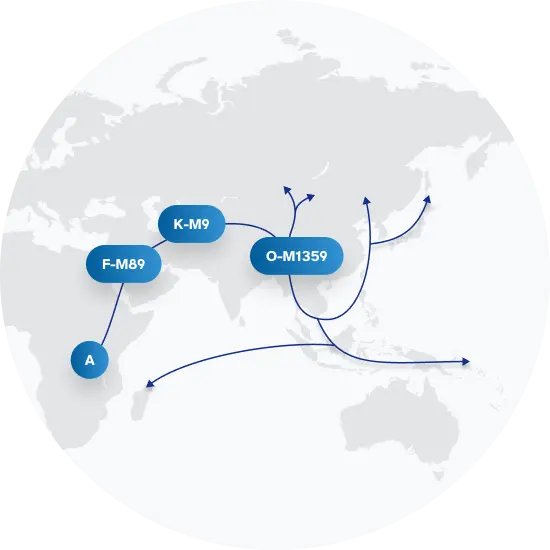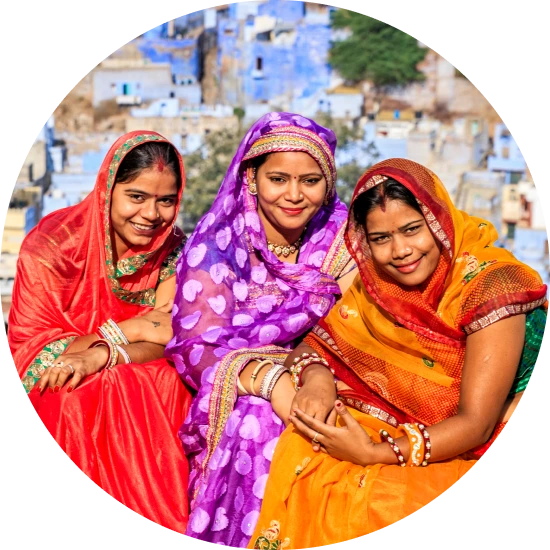Explore the Family Name Noor
How common is the last name Noor in the United States?
The surname "Noor" saw a significant increase in popularity between the 2000 and 2010 Decennial U.S. Census. In 2000, it was ranked at 20,484 but rose sharply to 12,192 by 2010, representing an approximate 40.48% change. The count of those bearing the surname also more than doubled from 1,204 to 2,555, which is an impressive 112.21% growth. This surge expanded its proportion per 100k people from 0.45 to 0.87, a 93.33% increase.
| 2000 | 2010 | Change | |
|---|---|---|---|
| Rank | #20,484 | #12,192 | 40.48% |
| Count | 1,204 | 2,555 | 112.21% |
| Proportion per 100k | 0.45 | 0.87 | 93.33% |
Race and Ethnicity of people with the last name Noor
The ethnic identity associated with the "Noor" surname also underwent some changes based on data from the Decennial U.S. Census. The Asian/Pacific Islander group recorded a positive change, increasing from 34.88% to 39.96%. However, there were decreases for those identifying as White (from 29.4% to 17.03%) and those claiming two or more races (from 17.52% to 6.14%). Interestingly, the Black community showed a remarkable growth, surging from 16.69% to 35.69%. Despite this, the Hispanic and American Indian and Alaskan Native groups had no representation in 2010, compared to their minimal proportions in 2000.
| 2000 | 2010 | Change | |
|---|---|---|---|
| Asian/Pacific Islander | 34.88% | 39.96% | 14.56% |
| Black | 16.69% | 35.69% | 113.84% |
| White | 29.4% | 17.03% | -42.07% |
| Two or More Races | 17.52% | 6.14% | -64.95% |
| Hispanic | 1.08% | 0% | 0% |
| American Indian and Alaskan Native | 0.42% | 0% | 0% |
Noor ancestry composition
23andMe computes an ancestry breakdown for each customer. People may have ancestry from just one population or they may have ancestry from several populations. The most commonly-observed ancestry found in people with the surname Noor is Northern Indian & Pakistani, which comprises 22.6% of all ancestry found in people with the surname. The next two most common ancestries are Somali (17.9%) and Bengali & Northeast Indian (13.9%). Additional ancestries include Central Asian, British & Irish, French & German, Southern Indian & Sri Lankan, and Egyptian.
Ready to learn more about your ancestry? Get the most comprehensive ancestry breakdown on the market by taking our DNA test. Shop 23andMe
| ANCESTRY BREAKDOWN | COMPOSITION |
|---|---|
| Northern Indian & Pakistani | 22.6% |
| Somali | 17.9% |
| Bengali & Northeast Indian | 13.9% |
| Other | 45.6% |

Possible origins of the surname Noor
Your DNA provides clues about where your recent ancestors may have lived. Having many distant relatives in the same location suggests that you may all share common ancestry there. Locations with many distant relatives can also be places where people have migrated recently, such as large cities. If a large number of individuals who share your surname have distant relatives in a specific area, it could indicate a connection between your surname and that location, stemming from either recent ancestral ties or migration.
Based on 23andMe data, people with last name Noor have recent ancestry locations spanning a few countries, mostly in Somalia, and Pakistan.
| RECENT ANCESTRY Location | Percentage |
|---|---|
| Banaadir, Somalia | 27.10% |
| Punjab, Pakistan | 22.90% |
| Glasgow City, United Kingdom | 18.60% |
| West Midlands, United Kingdom | 18.60% |
| Tyne And Wear, United Kingdom | 18.60% |
What Noor haplogroups can tell you
Haplogroups are genetic population groups that share a common ancestor on either your paternal or maternal line. These paternal and maternal haplogroups shed light on your genetic ancestry and help tell the story of your family.
The top paternal haplogroup of people with the surname Noor is O-F2415, which is predominantly found among people with East Asian & Indigenous American ancestry. Haplogroup O-F2415 is descended from haplogroup O-M1359. Other common haplogroups include E-M183 and O-F2859, which are predominantly found among people with European and East Asian & Indigenous American ancestry.
The most common maternal haplogroups of people with Noor surname are: M, U2, R. These most commonly trace back to individuals of European ancestry.
 Paternal Haplogroup Origins O-M1359
Paternal Haplogroup Origins O-M1359
Your paternal lineage may be linked to the Cham
One of the many populations harboring members of haplogroup O1b1a1a1a1 is the Cham ethnic group, a group of people who speak Austronesian languages in Mainland Southeast Asia. Austronesian languages make up a language family that is extremely large and widespread, comprising over 350 million people on islands such as Madagascar, Easter Island, and many others. However, Austronesian languages are less common on mainland Asia, with a notable exception being the Chamic language. Research suggests that ancestors of the Cham people migrated from Southeast Asian islands to the mainland around the year 500 BCE, and that early Cham populations quickly began mixing with indigenous southern Vietnamese populations. As a result, the Chamic language now has words that were borrowed from languages spoken by indigenous Vietnamese people. It is likely that an ancestral Kinh population was one of the populations that mixed with the Cham people shortly after their migration to mainland Asia.
Your maternal lineage may be linked to the ancient people of the Indian subcontinent
While Haplogroup M is widespread throughout South and East Asia, it is more diverse on the Indian sub-continent than anywhere else in the world. The high degree of diversity of M in India is likely tied to its ancient arrival here nearly 50,000 years ago. In addition to M2, which is found throughout the subcontinent, there are dozens of haplogroups branching off of M that exist in India. These branches are often connected to specific regions, tribes, or ethnic groups. For example, haplogroup M18 is found among the Oraon peoples of eastern India and Bangladesh, while haplogroup M41 is common among the Pardhan speakers of eastern India, and haplogroup M31a can be found on the Andaman Islands, just off the southeast coast of India.

What do people with the surname Noor have in common?
Spoiler alert: it's complicated. People with the same last name are usually no more genetically similar than a randomly sampled group of people from the same population. That said, people with the same surname are more likely to have similar ancestries than randomly sampled individuals. The reason is the tendency of people with similar cultural or geographical backgrounds to preferentially mate with one another. That's why people who share a surname may be more likely to share traits and tendencies in common than people within the general population. Check out the percentages below to see the prevalences of tastes, habits, and traits of people with your surname compared with prevalences among 23andMe users.
Preferences

Likes Sweets
Enjoys eating sweets more than other people.
"Noor" Surname 45.5%
23andMe Users 33.8%
Traits

Misophonia
When sounds made by others, like the sound of chewing or yawning, provoke strong emotional reactions in an individual.
"Noor" Surname 35.3%
23andMe Users 27.9%
Habits

Vitamin Use
Takes vitamins on a regular basis.
"Noor" Surname 50.0%
23andMe Users 45.5%
Wellness

Migraine
A severe headache characterized by intense pain, sensitivity to light and sound, and often accompanied by nausea and vomiting.
"Noor" Surname 15.1%
23andMe Users 16.4%
Are health conditions linked to the last name Noor?
The short answer is that, if there is an association between surname and health, it's usually more about your ancestry than your name. Individuals with a given surname are no more genetically similar than the general population but often have similar ancestries. The populations of people associated with those shared ancestries often have sets of genetic variations, also known as alleles, in common. Some of those alleles are associated with a greater likelihood of developing certain diseases.
Disease variant frequency by ancestry
Disease allele frequencies in populations associated with the surname Noor are shown below. Important Note: not everyone with a disease allele will develop these health condition
